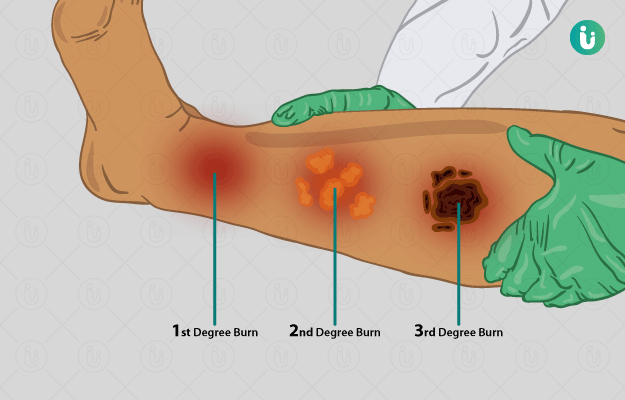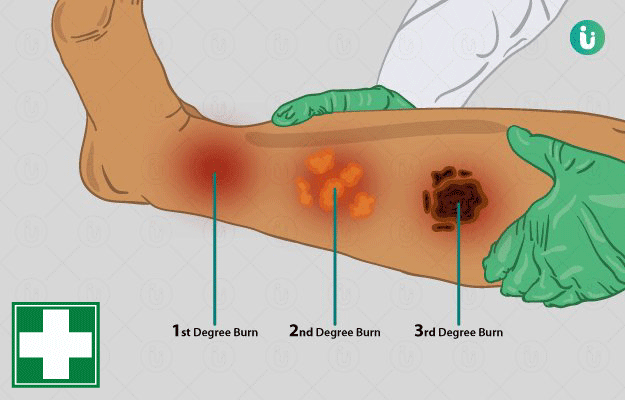What are burns?
A burn is probably one of the most common injuries. A person can suffer from burns at home, on the road, at work – just about anywhere. Most of us consider burns to be the sensation felt as a result of a burning injury, however, burns refer to damage caused to the skin tissues due to which the affected cells die.
Burns vary in the extent of damage that they cause and are classified as first-, second- or third-degree burns, in increasing order of severity. A fourth-degree burn is one where the burn goes beyond the skin and affects muscles, bones and tendons.
What are its major signs and symptoms?
Signs and symptoms vary greatly with the degree of burn.
- First-degree burns:
- Slight swelling
- Redness
- Sharp pain
- Dryness and peeling of the skin as it heals
- Almost complete disappearance of scarring once the burnt skin is shed
- Second-degree burns:
- Burn goes beyond the first layer of skin
- Severe soreness and redness
- Blisters on the skin
- Wet, watery substance within blisters which may ooze if blisters burst
- Thick, soft tissue which forms a scab over the wound
- Change in pigmentation of skin in the burn site
- Grafting may be required in case skin is permanently damaged
- Third-degree burns:
- Goes through all layers of the skin
- Causes nerve damage and loss of sensation
- May look white and waxy, charred or even brown
- Burn site feels leathery and looks raised
- Require surgery to prevent major scarring and damage
- May take very long to heal fully
What are the main causes of burns?
A number of factors can cause burns, including:
- Chemicals and electrical current
- Fires and flames
- Hot objects
- Boiling hot liquids which scald
- Prolonged exposure to the sun
How is it diagnosed and treated?
The first step to diagnosis is to fully examine the burn for its extent and severity. Patients may be referred to special clinics or burn centres if the extent of damage is great. Tests like X-rays may be conducted to look for other possible damage.
Treatment will depend on the degree of burn. Some burns may be attended to at home, while some may require immediate medical attention.
- First-degree burns
- Keeping the area soaked in cool water for up to 10 minutes
- Taking a painkiller
- Applying a soothing gel or cream like silver nitrate ointment
- Protecting the area with antibiotic and gauze
- Second-degree burns
- Keeping the area clean and covered
- Holding the burnt area under cool running water for about 15 minutes
- Using antibiotic cream for blisters
- Avoid using cotton and bandaging it tightly
- Third-degree burns
- Seek emergency medical assistance
- Avoiding any home medication or treatment
- Intravenous antibiotics and fluids
- Special wound dressing
- Medications to relieve pain
- Skin grafting for scarred areas
- Breathing assistance and feeding tubes, if required
- Plastic surgery, if needed

 Doctors for Burns
Doctors for Burns  OTC Medicines for Burns
OTC Medicines for Burns
 Burns articles
Burns articles

 First Aid for Burns
First Aid for Burns







 Dr. Ayush Pandey
Dr. Ayush Pandey











